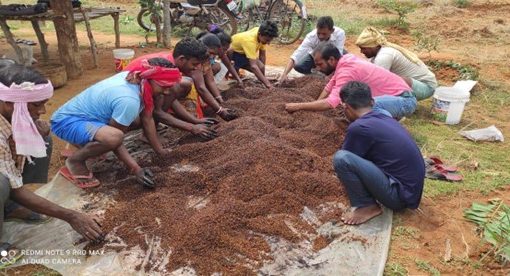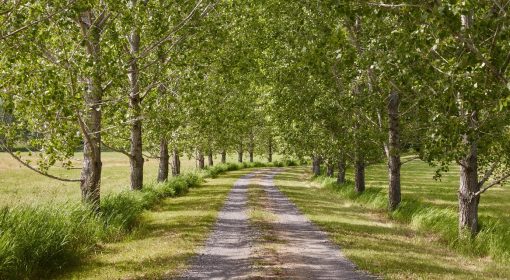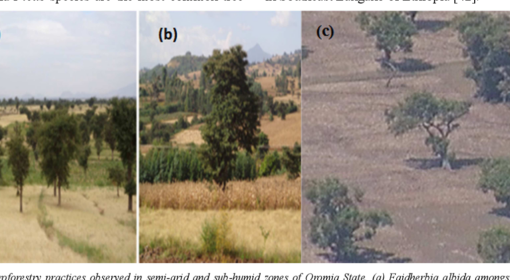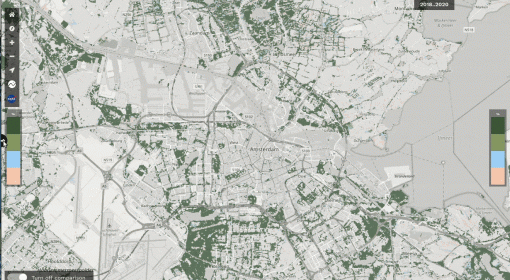By Jean-Baptiste CHAUDRON at Restore Forest
Everyone has already felt the interest of learning new things.
When it comes to a whole new area for you, it can be overwhelming. Especially if experts of the subject try to make it complicated…
That’s what happened to me when I became interested in the Miyawaki method of planting mini-forests. I had made the commitment with my family to study this technique in depth. So we would be able to plant our first Miyawaki forest as a family. I spent days and nights searching for information via the Internet. Lots of complicated concepts and theories from botanists or forestry experts. As I accumulated knowledge, I discovered that there were only 5 key lessons that were really useful and quite simple to apply.
During my journey of planting several mini-forests with my family, I also discovered what really matters. These elements could be simplified and shared in everyday language. So that’s my mission. Let me explain the 5 Key Steps of the Miyawaki method to plant a mini-forest.

Step 1 – Define the project: Site, Team, Money
Site
Your mini-forest needs a nice place to grow.
So, first you need to find the site location for your plantation.
It can be private land or public land.
Go scouting, walk around!
Here are the requirements for the parcel:
1) Minimum width of 4 meters (13 ft)
2) Minimum total area of 70 m² (753 ft²).
3) Easy access
4) Space available on the side as a technical area
5) Access to water if you plant in a dry area (personally I never needed watering in Northern Europe)
Criteria 1) of a minimum width of 4 meters is important. With 4 meters of dense plantation, you cannot see through it. It acts as a efficient barrier (noise, view, pollution…) and gives the starting feeling of a forest.
For Criteria 2), in theory, you can start with a minimum total area of 16 m² (172 ft²). Our first test was performed on 40 m² and it was nice. After several projects, it appears that a minimum total area of 70 m² is a good tipping point to get the great feeling of a mini-forest. Imagine only 6 parking spaces!
Let’s accept it. It is much easier and faster to do it on private land.
It could be the backyard of your house or a vacant lot of a family member or friend. It can also be land owned by someone you know. For example, you can persuade farmers for small plots that they do not use. Or on the side of your company building. Convince your boss to plant a mini forest as a team building event!
You can also target public land such as:
– the courtyard of your school/university
– free space in your city
For this option, you must contact the administration. It may take longer to convince them. But in the long run, you can use the power of the local community.
Team
Creating alone a project is possible. All by yourself. There are examples of people planting thousands of trees alone. But believe me, it’s much nicer if you’re with a group of people!
If you are here, it is because you are interested in Nature and the actions you can take for the planet. So it seems that you will be the Team Leader. Or at least the Initiator/Pioneer of the Miyawaki mini-forest project.
Then start discussing the project around you. Every time you get the chance. Family, Friends, Colleagues… You will be amazed at the interest aroused by your mini-forest. It will be easy for you to gather a great team of volunteers around your project. These team members will be valuable for the next steps.
At the end, you will organize a Tree Planting Festival. And the more, the merrier!
Money
Now here comes the harsh part of Money…
You will need money to buy planting material, saplings (young trees) and tools.
On the tools, you can find smart options to rent them or each team member brings their own tools.
Anyway, at some point you need money to plant.
will give you a rough estimate.
Depending on your region and the level of what you do, this can range from 2000 € to 4000 € for 300 trees.
All inclusive.
There are several options for gathering your target amount. You can:
1) use your own savings (this is the path we followed first)
2) call for crowdfunding on the Internet
3) request the participatory budget of your city
4) get a company sponsor
For the final corporate sponsorship option, please do not accept funding from any airport or oil company… There are a lot of these fossil fuel companies running around to do greenwashing. They plant few trees for their image and continue to pollute the planet.
The main question to ask is “What is the main activity of this company? “. If you think that’s right, go for it!
Step 2 – Prepare the Soil
Now that you have your site, it’s time to get your hands dirty!
You need to promote the growth of your future young trees. You must put them in the best conditions to thrive. So it is necessary to study the soil and bring what will be necessary to enrich it.
Soil analysis
For the soil analysis, you will:
1) take a shovel to your site
2) dig a hole
3) put earth in your hand
4) mix with water
5) define its composition. There are 3 main components: sand, silt, clay. You can define it thanks to the ribbon test and the size of the grains.
A good video explaining the process is provided here:
Tutorial video about soil analysis
What you should target for your plantation is a soil that is:
– soft, tender, smooth
– sufficiently airy for air circulation and easy to develop for the roots
– able to retain water
Added materials to the soil
For this, you will dig your soil and add 3 types of material:
– perforator material
– water retaining material
– nutrition material
The ultimate goal is to have the soil you can imagine from the Amazon jungle: soft with a rich humus.
In a previous blog post, I explained it. It is crucial for trees to develop a mesh of roots to collaborate:
5 Things most people do not know about trees
This step of soil preparation is the most time-consuming. You will sweat and it’s a free sports session given for Nature!
But you can make it a fun event with a picnic and drinks at the end of the day.
During this stage, you build team spirit and have time to chat with each team member.

Step 3 – Identify Native Species
Adapted species
Once you have defined your project and you have prepared your soil, the question is “What tree species are we going to plant here?”.
Simple: tree species that will feel good in your neighborhood! 😊
For this, the key is to identify native species.
Tree species that have been in your area for a long time. This means that their type is adapted to the soil and the climate.
Many species have been brought by man. It can therefore be tricky to differentiate between native species and species imported from other regions/countries. You can investigate with searches on the Internet or in the library. You can also chat with senior citizens or meet local botanical experts.
Field investigation
But my secret tool is…
Drum roll!!!
Field research and Technology!
The best approach is to take a nice walk in a Nature Reserve with a forest, close to your home. Go in search of the local species that you will find there.
You will answer me: “I am not a professional botanist! I don’t know a single species of tree. How do you identify more than 10 species?” Here’s the good part. Today, you can download apps to your smartphone that will identify a tree species from a photo! Several Plant ID apps are available in digital stores: PlantNet, LeafSnap, Picture This, Search, PlantSnap…
My favorite is PlantNet. It’s a powerful tool, it’s free, the database keeps growing thanks to the community, and the Artificial Intelligence does its magic to recognize the right tree species.
You can do it with children. They really enjoy this Tree Treasure Hunt searching for different trees.
Create the 4 groups for the plantation
You will identify the 4 categories of height:
- shrub layer
- sub-tree layer
- tree layer
- canopy layer
Your forest will live much longer than you. It will be confronted with climate change in the years to come but also in the long term over the next century. We are already seeing species that resent rising temperatures and more frequent and intense droughts. I also advise you to scout in the south of your region or in drier areas to anticipate this adaptation.

Step 4 – Perform the plantation
Upstream organization
This is the fun and most satisfying part of the project.
It’s up to you to create a joyful event around the plantation! Bring family, friends, colleagues and in some cases even a community of citizens.
Spend the day planting saplings and everyone will enjoy this Happy Plantation Festival!
In practice, your soil has been prepared.
It is smooth and ready for young trees.
The plants have been delivered to your technical area.
I recommend planting 3 trees/m² (3 trees/10.8ft²).
It can go up to 7 trees/m² in the mangrove area! But 3 trees/m² remains the Golden number in most regions.
So depending on the surface available in m², you multiply by 3 and you get the number of trees to order.
From your identification of native trees, you have the species. They are classified in the 4 different layers/height. Targeting 25 species in total is a good number for a resilient mix.
Here is the ratio I recommend in the 4 layers:
– shrub layer – 15%
– sub-tree layer – 25%
– tree layer – 50%
– canopy layer – 10%
These figures are indicative. If you have +/- 5% variation per type, that’s still OK.
Plantation technique
To facilitate the planting work, you must make apparent squares of 1m x 1m (3.3 ft x 3.3 ft) on your land. We use organic flour to make visible lines.
Next, you will arrange your saplings into 4 piles based on the 4 layers. And ask planters to randomly choose 3 trees, one of each type, to plant in their patch.
This is a major lesson learned from Nature. The Miyawaki reforestation method uses Random planting. As Nature does. Planting in artificial lines is absolutely to be avoided. So plant your 3 trees in your square as you want! Without looking for any geometric pattern. This is why Dr. Akira Miyawaki loved planting with children. It was an organized messy planting! 🙂
If you want to discover other secret tips from Nature, you can read this dedicated post:
4 Lesssons we can learn from Nature for Miyawaki mini forests
Here you are! All your trees have been planted. To finish the job, you need to put a layer of mulch on the ground. This straw will act as a thermal buffer:
– In winter, it protects the roots of your young trees from freezing temperatures.
– In summer, it will keep moisture in the ground and prevent evaporation.
Step 5 – Come back for a light maintenance
Start-up maintenance
This final step usually scares people. It shouldn’t!
Once your mini-forest is planted, it is already autonomous. To encourage growth, all you need to do is come back to your site every quarter. Believe me, it will be pure pleasure to see how fast your trees grow!
During your visit, only 3 things to do:
– you check whether the young saplings are growing in the right direction. You adjust the tutor sticks.
– you remove the weeds so that all the energy is directed towards the growth of your trees.
– you add mulch if needed
After 2 years, your forest will be maintenance-free. It knows the way and he will grow independently. As Dr. Akira Miyawaki said: “The best maintenance is no maintenance”.
Evolution inside the mini forest
The trees will reach between 2 meters and 3 meters (6.6-9.8 feet). Their leaves will fall to the ground and prevent future weeding. A nice layer of humus will be created.
At this point, if you dig with a shovel, you will find dark, smooth ground, like a chocolate cake. This rich, healthy soil will be full of earthworms.
The presence of earthworms is one of the good indicators of a regenerative soil. The nutrient material added in Step 2 has provided natural nitrogen and nutrients to your Miyawaki forest. Earthworms from all over the neighborhood were attracted. Then the earthworms did their magic work. Mix the soil layers and create tunnels. With air, water and soft soil for the roots of your trees. Earthworms are one of the Key Success Factors you’ll find in your Miyawaki Mini-Forest.
Like you, they are part of the ecosystem. They make a valuable contribution to the regeneration of our future.
It’s over! You can now enjoy your mini Miyawaki forest. Come back from time to time. Let yourself be surprised by this haven of biodiversity that has been created. Spend a cool and peaceful time inside this mini-forest to read, reflect or meditate. Nature will take care of you! You will have a good time.
Conclusion
I hope you enjoyed reading this post about the Key Steps of the Miyawaki method to plant a mini forest.
I told you. It’s quite simple!
With change management, the first step is always the hardest. If you have a small interest in improving your local environment, go for it! Have confidence. Follow this guide. It won’t be perfect but who cares? Believe me, Nature will compensate for the flaws in your planting.
Personally, I started from scratch. After hundreds of trees planted as a family, I am convinced that anyone can plant a mini-forest. It is up to you for action! If you need advice, do not hesitate to contact me. I will be happy to share my expertise.
See you soon in your coming mini-forest!



